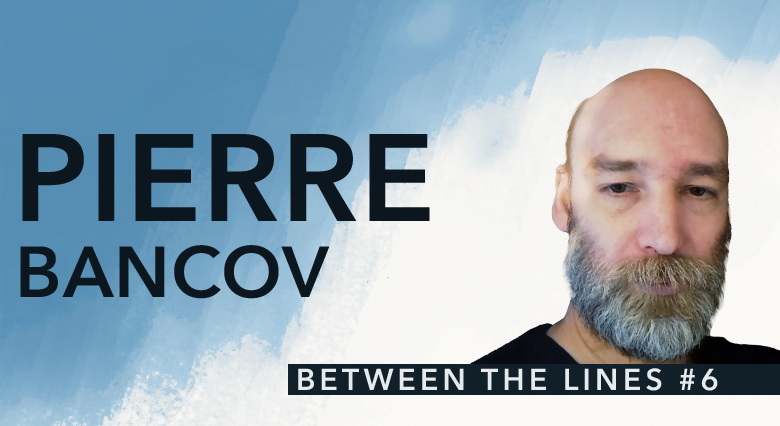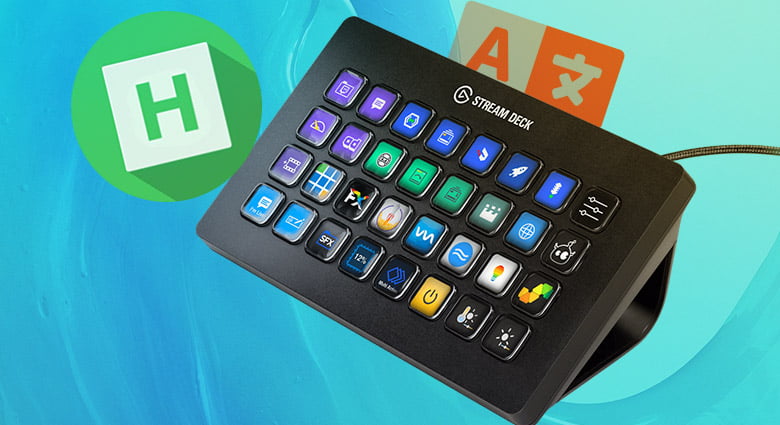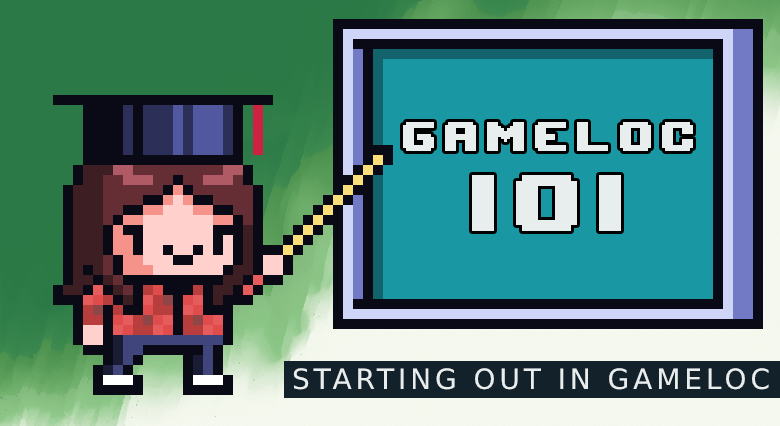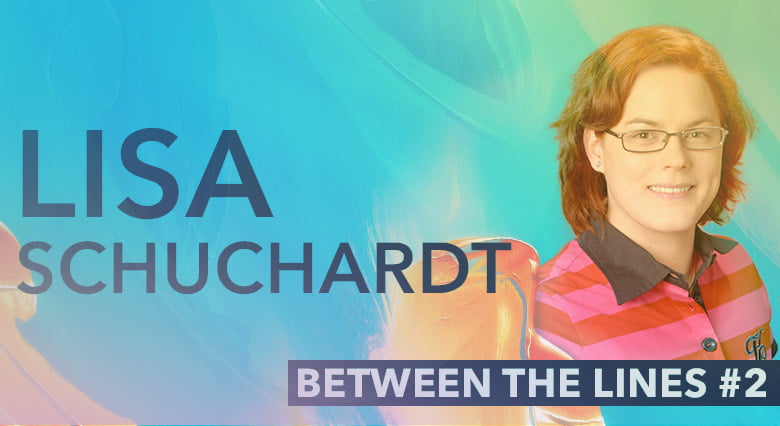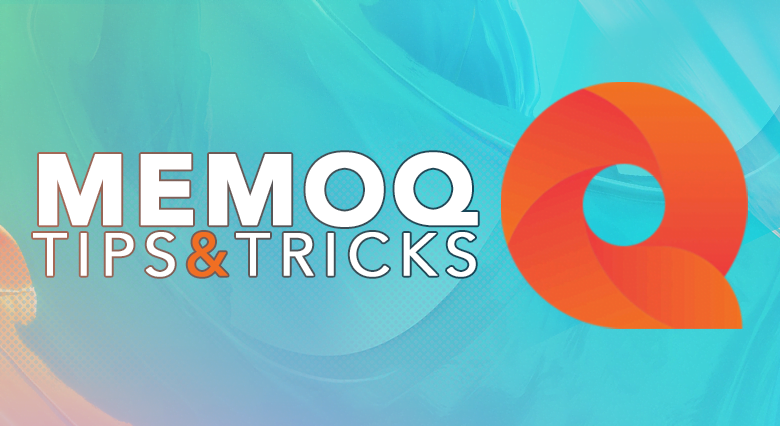I’m delighted to introduce a very special guest for the sixth edition of Between the Lines — Pierre Bancov, a translator with 24 years of experience specializing in pop culture. He has a broad knowledge of Japanese culture. Today, we’ll look back on his career, and get some insight into his translation of the visual novel “Le Sanglot des Cigales” (When They Cry).
This interview was originally conducted in French! Read the original version here.
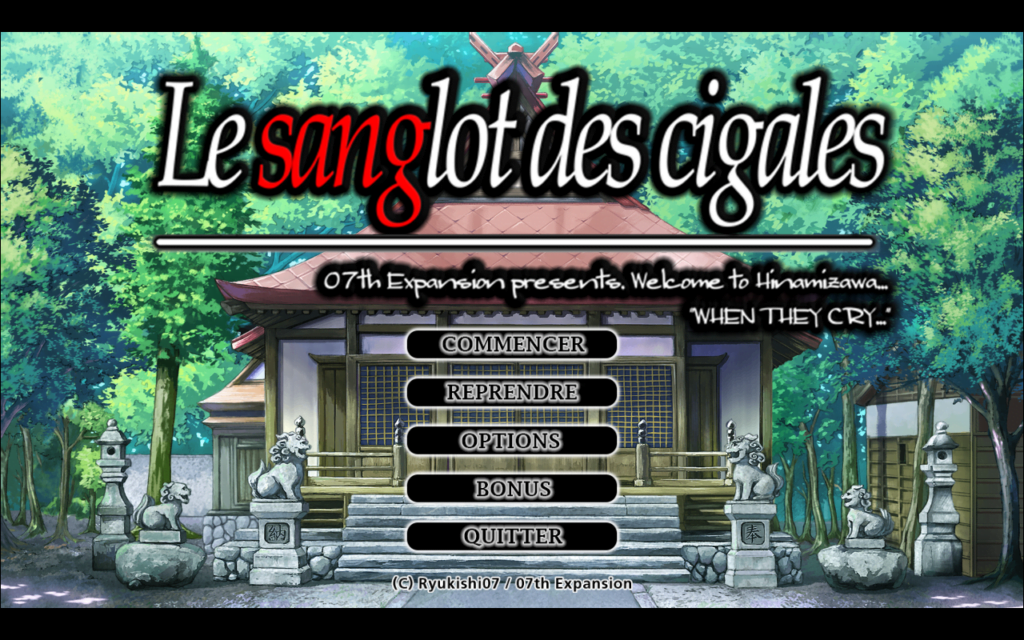
Hi Pierre! Can you briefly introduce yourself?
Hello, my name is Pierre Bancov. I’m 43 years old (I have one false tooth), I’m single, my shoe size is 49, and I’ve been part of the translation industry since forever. I started my own business in October 2006. My work mostly involves pop culture media: video games, manga, anime, and movies.
You are mainly known for your French translation of the visual novel “Le Sanglot des Cigales,” or “Higurashi no Naku Koro ni” in its original language. How did you discover this series, and what made you decide to translate it?
I moved to Frankfurt in 2006 to work for Nintendo of Europe GmbH. The job didn’t leave me much time to follow the latest anime and game-related news. I asked a friend to summarize the new releases of the year, and he told me about Higurashi’s first animated series. He offered me his copies of the game. He’d ordered them out of curiosity, but the text was a bit too difficult for him to decipher and he gave up.
It was an exciting read (the twist at the end of volume 1, the scenes in the forest in volume 3, etc.) and I was convinced that the game was going to be released in Europe for sure. But time went by, and nothing new came over the horizon. I tried lobbying a bit by contacting publishers to test the waters, but it seemed no one wanted to jump in — so I did.
Can you describe how you approached the process? How long did it take you to translate all the volumes?
If we’re talking about just the translation, all 2.4 million characters of the story (as well as the software used to display the text) took me about 3 years. However, my efforts spanned over 6 years to get it to market.
I am familiar with the indie scene, so I knew where to find the tools to extract the script and the tools to modify the engine in order to properly display Unicode characters. I started translating the first volume in my spare time. It took me about 4 months, followed by roughly 7 months of proofreading. But here’s a scoop — typos are inevitable.
I then started looking for a way to properly market the game, though my priority was to get a working prototype. While I was waiting on contracts and other approvals, I finally managed to get my hands on a game engine that made a “real” French version possible. I decided on a marketing plan based on releasing two volumes at a time. I knew it would take me several months to translate and proofread each volume, but I didn’t want to drag it out too much because the animated series was already being published in France.
In 2010, I was called to London to work on Pokémon Gen 5, which meant a delay in releasing new volumes. Finally, at the end of May 2012, I’d released the 8th volume which concluded the main scenario. The game was released during a French anime convention (Épitanime) with the author himself in attendance. He had been invited as a guest of honor.
In the games industry, many translators work from English as the source language regardless of a game’s original language, mainly due to budgeting. However, you translate from Japanese. What are some of the specific challenges of this language, especially when translating into French?
Japanese, compared to French, is a language that has very different cultural roots and folklore. Japanese idioms sometimes refer to deities unknown to most French audiences, from legendary characters whose names nobody can pronounce, to references that only the most die-hard Japanese culture enthusiasts can grasp. At first, I tried to leave references to TV series from the 60s and 70s, commercials, politicians and so on, but some of them either disappeared or were rephrased to become more palatable. We could leave a word like “Shinkansen” as-is, but wouldn’t TGV (note: “Train à grande vitesse,” the French intercity high-speed rail service) do the job just as well, on top of being immediately understandable?
Other than cultural references, the context-sensitive aspect of the Japanese language also gave me a hard time. A Japanese sentence doesn’t need a subject to be readable, but it’s almost just as true for direct objects. You do not need to explicitly mention who’s doing an action and for what purpose in Japanese, and this is an essential component of a detective story. This attribute is used to distill clues or throw the reader off track. And… that’s if the text is structured sentence by sentence, block by block. Now imagine the same thing on, say an Excel file, where sentences appear one by one, character by character, and not necessarily in the correct order.
Pragmatically speaking, since the Japanese writing system has multiple ways of being read, you’re never really sure how a given character is named. There were a couple of secondary characters whose names had multiple readings, and I happened to pick the wrong ones…
Do you have a favorite protagonist among the inhabitants of Hinamizawa?
Miyo Takano, the nurse of the local clinic. She’s a secondary character who proves to be very endearing over the course of the narrative.
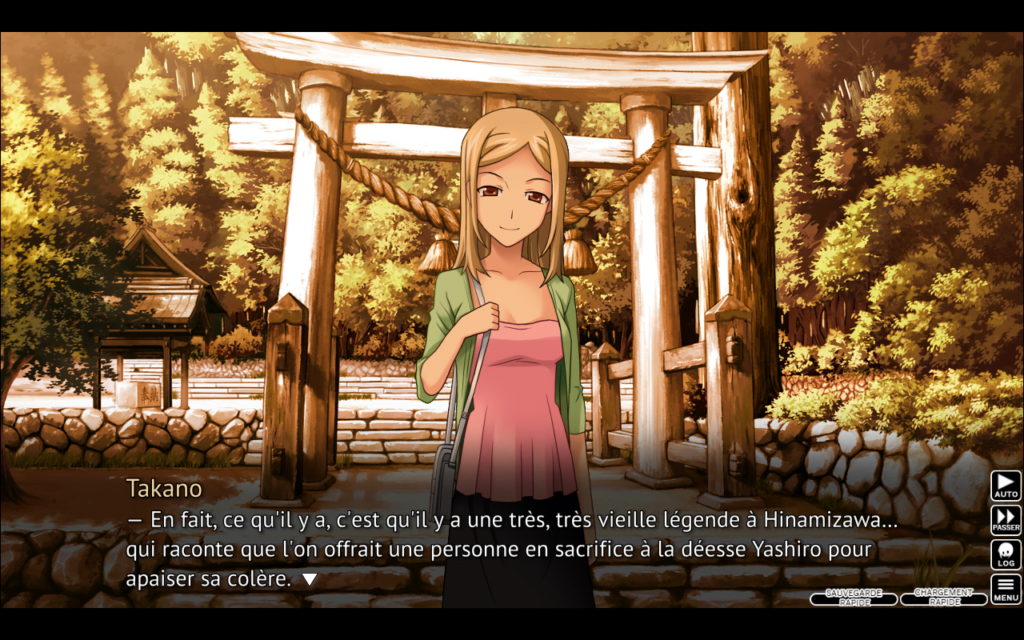
Where can I purchase the game and its French translation?
All eight volumes are spread over two CD-ROMs. Unfortunately, the first few volumes are now out of print. I only have a few physical copies of volumes 5 to 8 left, which you can get by contacting me privately, or on Amazon.
To get the French version of the game, you’ll have to purchase a digital version from a Japanese shop called “Cub’s Works“. You can learn more on the (quite vintage) official website, Hinamizawa.fr, where I’ve put links and explanations.
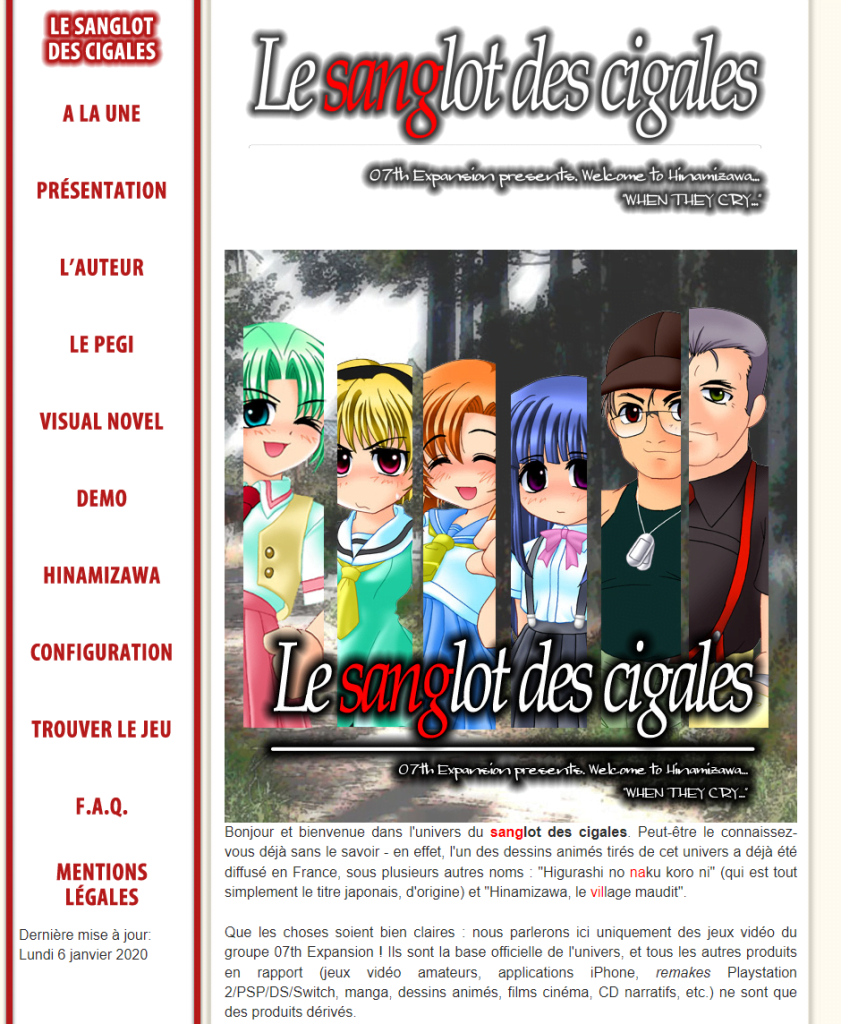
The game dates back to 2002(!) and runs on Windows, older versions of Mac (32 bits), as well as Linux. Unfortunately, I don’t have the knowledge or know the right people to rebuild the game on the 64 bit versions of Mac. A more up-to-date version was in the works, but the author is working on the next Silent Hill game so he has better things to do than go through old contracts, approval processes, etc. I don’t know if it will ever be released.
You can also purchase a newer version of the game on Steam* (in English), which you can then mod into French using a patch. The author will get his royalties. Me, on the other hand…
What does a typical work day look like for you?
For better or worse, I am self-employed, which means my typical working day doesn’t necessarily involve working. When that happens, I take the opportunity to watch and read other series, especially in Japanese, to stay up-to-date with the language. (I also speak English and German.) When I get audiovisual projects like dubbing, I tend to work on them step by step. I do all the spotting in the afternoon, take a short break, then work on translation and adaptation mostly in the evening. I can work long hours, but as I’m getting older I try to slow down a little.
As for game projects, this highly depends on the teams as I tend to work on bigger projects (like Triangle Strategy).
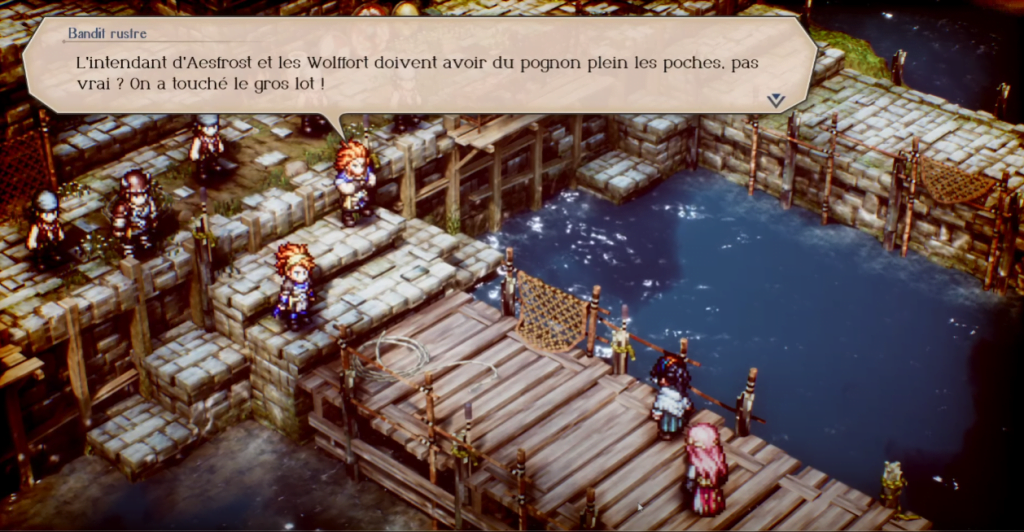
I’ve kept some bad habits from my younger days. My schedule can be a bit chaotic, but I find that’s what works best for me to stay motivated.
Is there an IP or a game you would like to work on?
I’d love to work with Sega… Maybe on Yakuza 9? (They probably already have a team working on the 8th installment). I’d also like to work on Phantasy Star Online 2 but the game has been out for 11 years with no French version in sight, so that’s probably a lost cause…
What was the most memorable moment of your career?
That’s a tough one, because my very first assignment was Twilight Princess for Nintendo of Europe GmbH. As someone who loves RPGs, and JRPGs in particular (starting with Ys on PC Engine), that was an unbelievable opportunity. Working on Pokémon was just as amazing, of course. People were really nice to me.
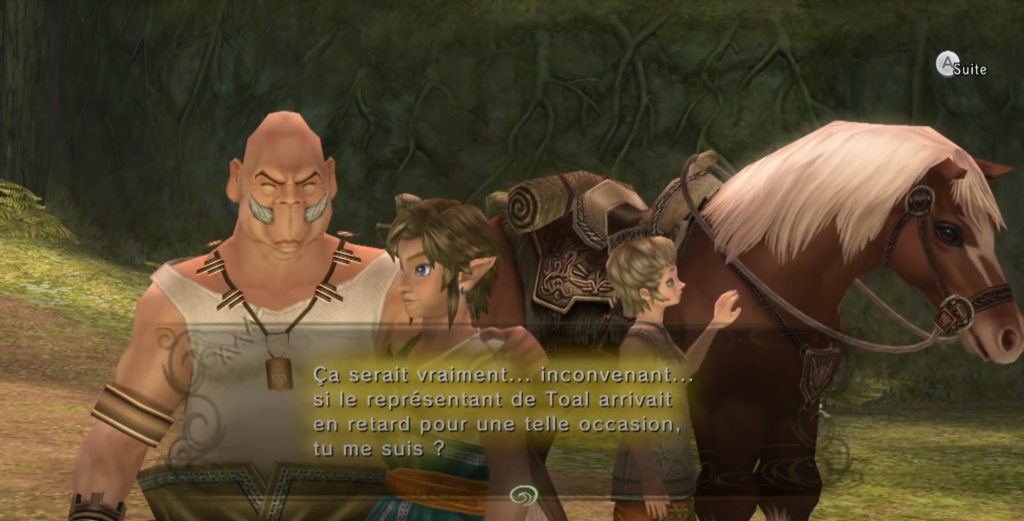
That said, the self-employed life isn’t all sunshine and roses. Regardless of location, this is a very tough market to break into and I’ve witnessed first-hand how toxic client relationships can be. The fact that I’ve been working in the industry for 24 years doesn’t always play in my favor either.
Do you have any advice for aspiring game translators?
Game translation is a niche, but you have a wild card — your youth. Many of the roles opening up lately are tailored to recruit juniors. It’s actually quite rare to see (insert your favorite game studio) looking for a senior, for example. On the other hand, be aware that you’ll have to face many challenges, and some can be quite unexpected. You must pay attention to your spelling, expand your vocabulary, follow glossaries, studio rules, technical limitations, not bruise anyone’s ego, don’t ask for too much…
How can we get in touch with you?
I hang out on a Discord server That Shall Not Be Named, and I have a rather discreet online presence on Twitter / LinkedIn / ProZ. You can also reach me by e-mail: safuran[at]yahoo.com.
*Please note that the game screenshots highlighted in this article were taken from the modded Steam version.
Special thanks to Phyllis Ang-Kruk for editing the English version of this interview.
Check out more editions of Between The Lines:
- Between The Lines #1: Natalia Nesterova
- Between The Lines #2: Lisa Schuchardt
- Between The Lines #3: Carlos Gómez
- Between The Lines #4: Loek van Kooten
- Between The Lines #5: Nob Ogasawara
This series is inspired by Jennifer O’Donnell’s “Interviews with Localizers“.

